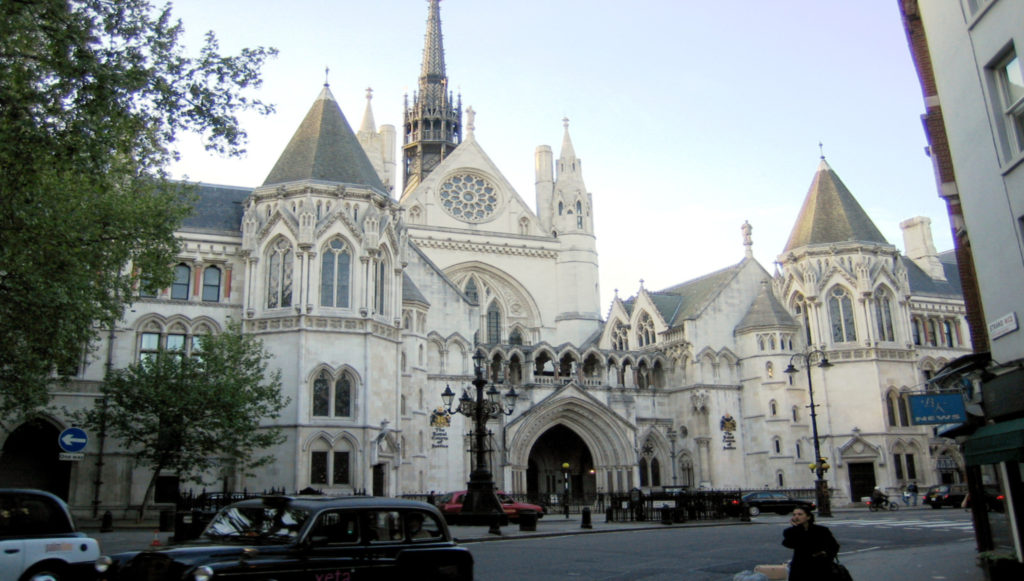
Once again, I am the bearer of news that every one of Britain’s eleven million registered mortgagors needs to know.
After five years of insisting that it is not liable for all the losses incurred by my family, in our on-going battle against Bank of Scotland, the Land Registry has accepted that we are entitled to be indemnified by the Chief Land Registrar, for every penny that was lost because of the illegal registration of nine fire-sold properties, which were valued in excess of £3.5M in 2010.
Just five days after receiving the invitation to apply for indemnity, a landmark decision was made in the court of appeal, which sheds some light on why the LR would make such a ruling, given how desperate it has been to avoid liability in our case.
Prior the judgment, given on 15/05/2018, in an appeal with the neutral citation number [2018] EWCA Civ 1082, no indeminifation by the Chief Land Regsitrar was even possible for a mortgagor, without having void and illegal entries in the charges register cancelled pursuant to a court order, which is an onerous task to say the least.
Nevertheless, even after having the void mortgage over one property [Ashquorn House] cancelled, the LR still refused to accept that we were entitled to indeminification for all our losses. Now, however, it would appear that Patten LJ has presented every illegally dispossessed mortgagor the means to redress the balance, albeit by the back door.
In summary of the outcome of the complex judgment:
1. When a property is fraudulently conveyed, upon the illegal registration of new proprietors, the Chief Land Registrar is liable for all losses incurred by all affected parties, as of the date the register is altered, as per the Swift Ltd decision.
2. Upon the transfer of monies for the illegal sale of the property concerned, the conveyancing solicitor is liable for all the losses incurred by the rightful beneficiary of the legal and equitable title, on the ground of breach of trust.
This means that, in the event that the Chief Land Registrar pays out compensation to an illegally dispossessed mortgagor, the firm of solicitors responsible for the registration of fraudulent or forged documents and the illegal transfer of funds can be sued by the CLR or the mortgagor to recover the losses incurred.
The effect of this decision is to remove the onerous burden upon the dispossessed mortgagor to have any judgment in favour of the void mortgagee set aside in the rigged courts system; as well as having the Charges Register duly rectified in an AP1 application [which, to the very best of my knowledge, has only ever been achieved in our case, when the charge over Ashquorn House was cancelled, pursuant to HHJ Behrens’ declaration that we are not estopped from relying on the defects in the mortgage deed, on 21/07/2014.
In the words of Rimer LJ, as quoted by Patten LJ in this landmark judgment:
89. “Nothing, said Lear, will come of nothing, and so it was here. Completion in the present context must mean the completion of a genuine contract by way of an exchange of real money in payment of the balance of the purchase price for real documents that will give the purchaser the means of registering the transfer of title to the property that he has agreed to buy and to charge. An exchange of real money for worthless forgeries in purported performance of a purported contract that was a nullity is not completion at all. Had that happened in this case, the parting with the loan money would have been a breach of trust.”
So what is the legal definition of ‘a forgery’ in this instance?
Section 4(2) of the Forgery Acy 1913 states:
Forgery of any public document which is not made felony under this or any other statute for the time being in force, if committed with intent to defraud or deceive, shall be a misdemeanour and punishable with imprisonment with or without hard labour for any term not exceeding two years.
Since every entry in the Charges Register is considered to be a ‘public document’, the following entries are forgeries made with the intent to deceive:
1. Any mortgage deed that was not signed by the mortgagor in the presence of a witness, who illegally witnessed the signature in a different place, at a different time [all of the void mortgages in our case].
2. Any mortgage deed that was altered in any way after signature [all mortgages which have a date added by a solicitor after it is signed by the mortgagor].
3. Any transfer of title deed that is registered without the authority of the owner of the property [all transfer deeds registered under the purported authority of a void possession order].
4. Any deed that is registered by a solicitor and pertains to a fraudulent claim for monies that aren’t owed [all the eleven million registered mortgages, on the ground that none of the banks actually lend any ‘real money’ to mortgagors].
Whilst there is a chance that the court of appeal’s decision will be overturned in the supreme court, my instinct tells me that this is somewhat unlikely on this occasion, for one very compelling reason:
The judgment provides the LR with the means to claim back every penny they shell out to indemnify the losses of void mortgagors, from the solicitors who were previously protected from liability by section 61 of the Trustee Act 1925 [see extract from the judgment below], for breach of the trust against the owner of the property illegally registered, as the solicitor acts as trustee for the beneficiary of the legal title.
“If it appears to the court that a trustee, whether appointed by the court or otherwise, is or may be personally liable for any breach of trust, whether the transaction alleged to be a breach of trust occurred before or after the commencement of this Act, but has acted honestly and reasonably, and ought fairly to be excused for the breach of trust and for omitting to obtain the directions of the court in the matter in which he committed such breach, then the court may relieve him either wholly or partly from personal liability for the same. […]
102. Since the contract was a nullity, so was the amendment made to it on 12 December. OWC were not therefore entitled to rely upon it as giving them authority to release the £430,000 to their client and remained bound by the Code [CML Code] in respect of the entirety of the purchase price. Since there never was any genuine completion of the sale, they are liable in my view to account for the entirety of the monies paid to them by the claimant.”
Given the incendiary and complex nature of this judgment, I will be making a special podcast discussing the various courses of action every one of Britain’s eleven million void mortgagors can take to indemnify themsleves against both losses incurred and future losses, caused by the institutionalised mortgage fraud carried out in their names by unscrupulous solicitors, on the instructions of the banks.




